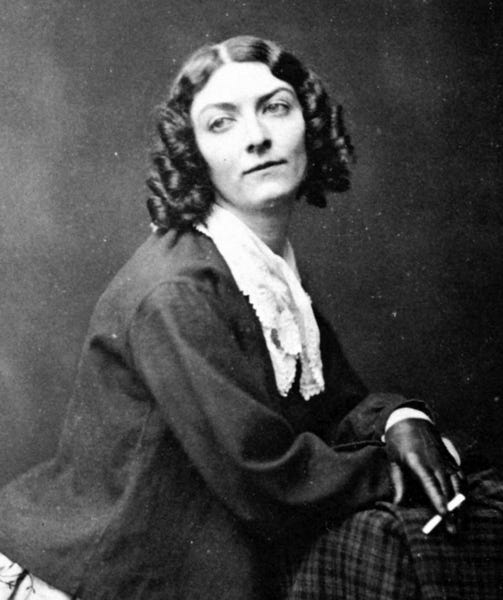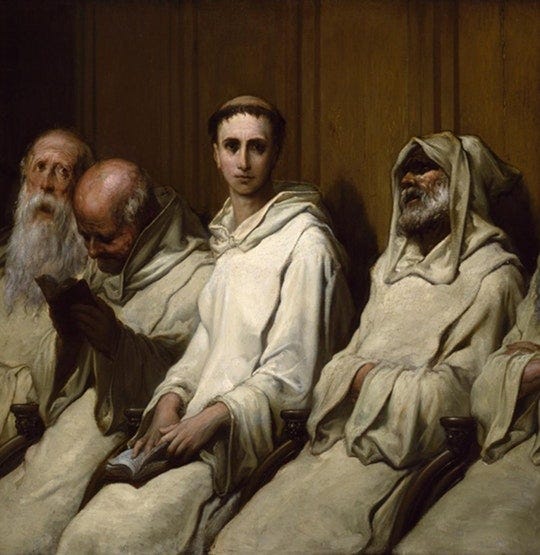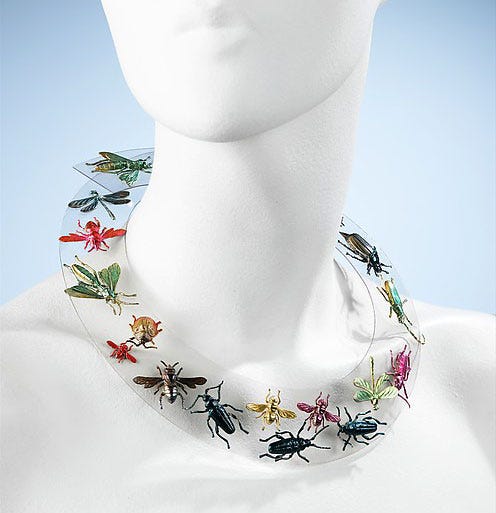Issue 4: Cool Randos Part One
Assorted cool folks of history. literary prodigies, fake Spanish dancers, forgotten poets laureate and more.
Happy holidays Cool Article Club. This issue is a tribute to one of my favorite categories of interest. Random cool person. Usually minor historical women. I can rattle off lists of such people: Emma Hamilton, Luisa Casati, Suzanne Valadon. None of them feature here or in next month's issue on the same theme. But I hope you will discover some new fascinating people in the below articles.
Long Read: Jack Gaioni Reveals The Fascinating Story Of Lola Montez, The Fake Spanish Dirty Dancer Who Captured A King’s Heart
Jack Gaioni
I am not sure How I first became aware of Lola Montez (Eliza Gilbert). I probably found her Wikipedia page somehow and was like ‘cool lady.’ Then I discovered her grave in Greenwood cemetery literally across the street from my childhood home. And once I got to Have One on Me in my big Joanna Newsom phase became obsessed with the title song which is about Lola. I was gushing about her to someone recently and they sent me this article, which is a great introduction to Ms. Gilbert.
A smart businesswoman whose product was herself. Lola capitalized well on her sexuality. Never afraid to reinvent herself in a new city, she couldn’t escape herself for long. She knew who to seduce, who to impress. Men lost not only their pride to Lola but even their lives and crowns. While Lola got a career, a title and more. Lola may not have been virtuous or good, but she was certainly smart, talented and interesting. Hit me up if you want to visit her grave.
“To all Men and Women of every land Who are not afraid of Themselves Who trust so much in their own souls that They dare to stand up in the might of their Own individuality To meet the tidal currents of the world.”
https://www.laphamsquarterly.org/celebrity/vanishing-act
Vanishing Act: Barbara Newhall Follett was a prodigy who transfixed the literary world—and then vanished.
Paul Collins
I adore Newhall Follett’s novel “The House Without Windows” as an artifact of modern juvenalia and as a novel. There is something appropriate in this adventuress’ disappearance. It would be harder to imagine her fading into an indifferent middle age. A NY literary sensation at twelve, some critics saw early fame might hamper an author. But Barbara was determined to create her own path. I haven’t read her later books, but she set off on real adventures and wrote about them. The praise became less begrudging. But real life happened to her, bursting her fantasy life. She couldn’t stop herself being let down by the men in her life. The article wanders away from Barbara to muse dimly on prodigy. No one is much surprised to stop hearing about a prodigy so Barbara’s absence goes unnoticed. Collins doesn’t overstate the similarity of Barbara’s end to her stories
Collins wisely compares Barbara to writers, composers, and prodigies of fields as far-flung as chess and math.
“A typewriter, her parents realized, could unleash a torrential flow of thoughts from a gifted child who still lacked the coordination to write in pencil.”
“’Now: “What doo zhoo fink???” It is Eepersip, The House Without Windows, my story, my story in New York, with the Knopfs, to be published!!... published!!!!!!!!’”
““Oh,” said the captain, “I see you’re a girl as likes to climb around.””
“‘“My dreams are going through their death flurries,’”
https://publicdomainreview.org/essay/the-strangely-troubled-life-of-digby-mackworth-dolben/
The Strangely Troubled Life of Digby Mackworth Dolben
Carl Miller
A sort of dual portrait of Robert Bridges and Digby Mackworth Dolben. With the surprise inclusion of Gerard Manley Hopkins. I found this article when I used to hang out with Christian communists and Trad Caths who adored Hopkins. Those friendships faded but my love of this article prevailed. A moody ode to friendship, religion, and poetry. Dolben is the real rando here. Who in his brief like went around Eton Barefoot in a Cassock. It is easy to feel Bridges and Hopkins’s pain at the loss of such a bright nascent figure in Victorian Arts and letters. Bridges memoir of Dolben is just a fascinating object, it’s a treat to read about.
“But he had once been Christian; and he had once been ardent; and even if the experience had failed to furnish him with any lasting faith it had at least given him lifelong friends.”
“Bridges's 1918 edition of the Poems of Gerard Manley Hopkins revealed in time that Hopkins's stunted life had been a chrysalid state from whose cramped walls a broad-winged poet would emerge into the open air.”
https://www.collectorsweekly.com/articles/a-shock-of-schiaparelli/
A Shock of Schiaparelli: The Surreal Provocateur Who Forever Altered Fashion
Hunter Oatman-Stanford
Ending with an iconic fashion girlie. Really a surrealist whose medium was clothing and accessories. \I was recently at an exhibit at Japan Society of Fluxus women. One of the pieces in this exhibit was a chess set on the back of a glove. I joked that it could be a standalone work of art or a surrealist fashion piece by someone like Schiaparelli, whose name I couldn't remember at the time. You’ve seen her clothes even if you don’t know her name.
Schiaparelli made garments for smart, funny, self-aware women. She was so ahead of or outside her time as to be all but forgotten. Through her ideas, beauty and skill Schiaparelli fell in with the surrealists, who recognized her as one of their own. We can thank her for any number of things including the trompe l’oeil sweater and lurex. The Schiaparelli woman was an athlete, aviatrix, artist, or Wallis Simpson (cool and dangerous, in other words). This article makes you love her. I need that acrylic bug necklace. I might learn to pour acrylic, in fact.
“She was a perfectionist who invented the first bathing suit with a built-in bra, the see-through raincoat, the ladies’ evening jacket, and the wrap dress.”
“‘I think she had a better grasp of what was going on because of her association with artists. Schiaparelli was probably more visually and intellectually astute than other designers, and since she was just starting out, she had less to risk.’”
“1931, tennis fans were shocked when champion Lilí Álvarez wore a “divided skirt” (also known as culottes) created by Schiaparelli. She later designed the practical and stylish wardrobe for aviator Amy Johnson’s solo flight to Cape Town, South Africa, in 1936.”
“She left for New York that year, refusing to design clothes while in exile out of solidarity with the couture houses of Paris. While abroad, Schiaparelli continued her creative pursuits, such as helping to organize the “First Papers of Surrealism” exhibition with Marcel Duchamp and André Breton in 1942.”
“‘A dress has no life of its own unless it is worn, and as soon as this happens, another personality takes over from you and animates it, or tries to, glorifies it or destroys it, or makes it into a song of beauty.’”
Thank you for reading this far. This theme is really one of my favorites yet and I am excited to continue it in January. I look forward to speaking to you all in the new year. I hope your holidays were very happy indeed and I wish you the best in 2024. Talk soon!!!
Claude




